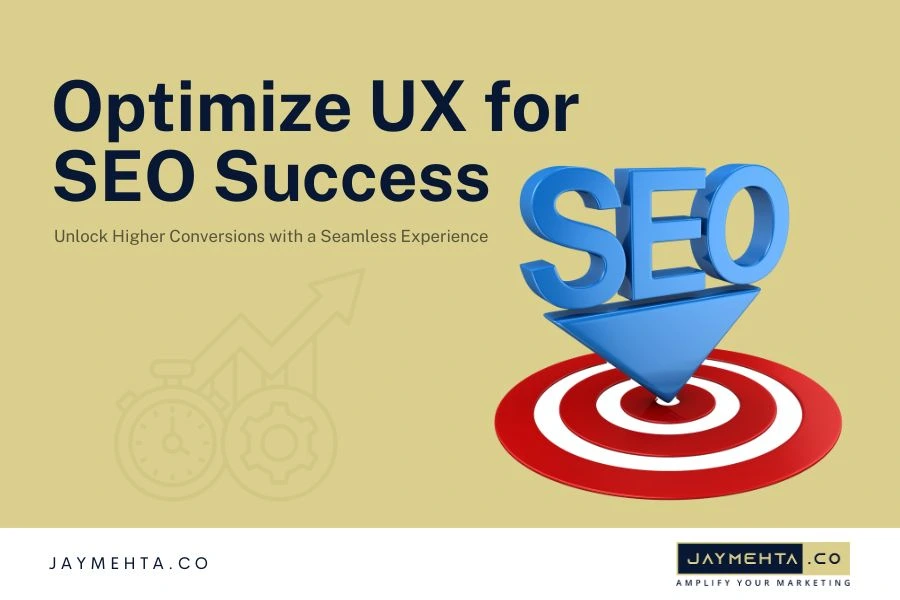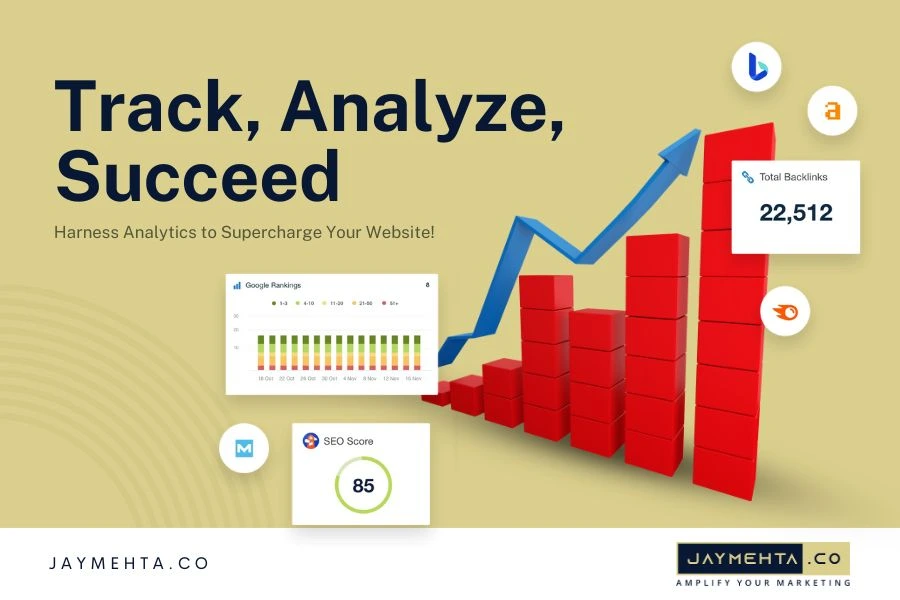A website is an essential marketing tool for any brand today. With high-quality visuals and targeted content, your website can distinguish your brand from competitors and attract more customers. It’s a vital component of your digital presence and one of the most effective platforms for driving traffic and boosting sales.
However, simply having a website isn’t enough to increase your revenue. To truly leverage your website for business growth and lead generation, it must be integrated into your marketing strategy.
In the next few minutes, we’ll explore how your website plays a crucial role in your marketing efforts and how it can significantly contribute to your business growth.
Let’s dive in.
Understanding Websites: Your Business’s Digital Address
Think of a website as your business’s digital home. It’s a collection of web pages that are live and accessible on the internet, all connected under a single domain name (basically, the website’s address).
When you buy a domain name, it’s like getting your own address on the internet. From there, a web designer or developer creates the web pages that will make up your site. Once these pages are designed, they are published under that domain name and, when hosted online, officially become your website.
In today’s world, having a website is more than just a good idea—it’s a necessity. Your website serves as the cornerstone of your company’s online presence. It’s where potential customers go to learn more about you, your products, or your services. A strong online presence helps you market your business effectively and establishes your credibility.
People today are busier than ever and often prefer to do their shopping and research online. Customers expect businesses, especially serious ones, to have an online presence. A well-designed, informative, and up-to-date website adds credibility to your business and strengthens your brand. If you want to succeed in today’s market, a professional website is key.
Related Blog: Why Having a Domain Name is Important: Establishing Credibility, Branding, and More
How Crucial Is Your Website to Your Digital Marketing Strategy?
The short answer is extremely!
Your website is often the primary place where people engage with your business. Nearly all your marketing efforts, whether online or offline, are likely to direct users to your website. This could be for them to find out more about your products or services, make a booking or purchase, or get your contact information.
Even the best marketing campaigns can fall flat if your website’s landing page fails to convert visitors into customers. Several factors can cause a website to underperform, such as slow loading speeds, poor responsiveness, or difficult navigation. It’s vital not to underestimate how much a well-designed website contributes to the success of your digital marketing strategy.
-
When evaluating your website, consider these key factors
- Conversion Rate: Are visitors becoming customers or leads?
- Competitor Analysis: How does your site’s performance compare to that of your competitors?
- Branding: Does your website accurately reflect your brand identity?
- SEO Performance: Is your website ranking well on search engines?
- Responsiveness: Is your site easily accessible on all devices?
- Site Speed: Are your web pages loading quickly?
If your website isn’t meeting your goals or falling short in these areas, it might be time to think about a redesign.
Is It Time for a New Website?
If you’re considering a new website, be sure to think about these elements carefully during the redesign process. Discuss each aspect with your web designer to ensure any updates enhance your website’s performance. Redesigns can sometimes backfire, leading to poorer performance than the original site if key factors aren’t taken into account.
For instance, a website filled with high-resolution images, videos, and interactive features might look impressive, but it can also slow down site speed. This, in turn, could increase your bounce rate, as users may leave if pages take too long to load.
Who’s Your Website Talking To? How to Define Your Audience
Start by figuring out who your website is meant to serve. Are you designing it for:
- Potential customers or leads
- Current customers or members
- News or media
- Your team or internal stakeholders
- The general public
-
Another specific group?
Once you have a clear picture of your audience, create detailed personas for each group and outline their user journey. This will help you understand how they find your site and what they do once they’re there, making it easier to guide them toward your goals.
-
What Does Your Audience Really Want?
Before diving into major changes, get to know your audience and how they interact online. Testing different designs on your current site can be a smart move before committing to a full redesign. For example, you might have a web designer build new landing pages for your marketing campaigns and then run A/B tests to see which ones perform best.
Based on the results, you can fine-tune things like your call to action (CTA) to see what clicks with your audience. Use these insights to shape a website that truly works for your visitors.
Make sure your website reflects your brand and includes all the key messages your audience expects to see, just as they would through any other marketing channel.
This version maintains the same information but is written in a more relatable and friendly tone.
What Is Your Website’s Purpose?
Your digital marketing strategy should outline your main goals, whether that’s generating leads, increasing sales, or boosting brand awareness. These goals should be at the heart of any website redesign. When selecting a web designer or agency, make sure they can demonstrate how their design will help you achieve these objectives.
Setting clear, measurable Key Performance Indicators (KPIs) for each goal is also crucial. These KPIs could include metrics like conversion rates, website visits, bounce rates, average time spent on pages, or keyword rankings.
To ensure your website effectively supports your goals, the design should take into account:
- Search Engine Optimization (SEO)
- Conversion Rate Optimization (CRO)
- User Experience (UX)
- Brand Identity
Craft a Website That Ranks: SEO Best Practices & Design Tips
Search Engine Optimization (SEO) is all about enhancing your site’s visibility in search engine results. This involves employing various on-site and off-site strategies. With about 93% of online activities starting on search engines, it’s crucial that your website appears in these search results.
Given that around 60% of searches now occur on mobile devices, having a responsive website is essential. While most modern websites are designed with responsiveness in mind, ensuring compatibility across the wide range of devices can be challenging.
Despite the prevalence of responsive design, many websites still aren’t optimized for mobile, which can be frustrating for users.
In addition to ensuring responsiveness, a web design should focus on other on-page optimization elements, including content quality, site navigation, and technical aspects.
Any modifications to your site can impact your SEO performance, affecting your rankings on search engines like Google and Bing. A well-thought-out design will address these key aspects:
-
Structure and Navigation
Ensuring easy navigation helps users and allows search engine bots to map your site effectively.
-
Aesthetics
While user-friendliness is paramount, a visually appealing design encourages users to stay on and return to your site.
-
Metadata
Custom metadata and alt tags provide detailed information about your pages, aiding search engine bots in understanding your content. Additionally, the page title and meta description are crucial as they appear in search results and influence click-through rates.
-
Content
Your site should facilitate the creation of new content to improve your Google indexing. Regular updates and fresh content can increase your site’s visibility and frequency of indexing by search engines.
If your current website isn’t optimized for navigation, speed, and overall design, a web designer can help rebuild it with these factors in mind, integrating them into the user experience (UX) design.
Read also: Guide to Using the Power of SEO to Build Your Brand Awareness
How to Optimize Your Website for Higher Conversions
Conversion Rate Optimization (CRO) focuses on improving your website to increase the likelihood that users will complete a specific action, thereby boosting your conversion rate.
A conversion isn’t always about selling a product; it depends on your specific goals. Conversions can include actions such as:
- Submitting a contact form
- Signing up for an email list
- Completing a booking
- Creating an account
- Finalizing a transaction
Your website should be designed to guide users toward these calls to action. A skilled web design team can make a significant impact by finding the right balance between visual appeal and functionality. When you clearly communicate your goals to them during the planning phase, they can help you optimize your site for better conversion rates.
While your marketing team is responsible for managing and analyzing CRO, they will need the collaboration of designers to effectively implement A/B and multivariate testing.
How to Improve UX for Better SEO and Conversions
User Experience (UX) is about ensuring visitors have a great time on your website. When designing a site, you want it to be easy to use, accessible, and genuinely valuable to your audience. Good UX is key to web design and plays a big role in SEO and CRO. Search engines aim to deliver the most relevant websites to users and often prioritize sites with a great user experience. Plus, to boost conversions, you must think carefully about users’ entire journey on your site.
A visually appealing website can create a strong first impression and positive emotional response. But you might run into trouble if you focus too much on looks and not enough on how the site works. Users may enjoy the design, but if the site is hard to navigate or pages take forever to load, they’re unlikely to stick around or come back.
People expect websites to load fast—like, really fast. To keep your site speedy, compress images and videos and use server compression to limit file sizes. Planning for these things during the design phase is much easier than fixing them later. Tools like Google’s PageSpeed Insights can help you find ways to improve your site speed.
And remember, good navigation is crucial. If visitors can’t quickly find what they’re looking for, they’ll leave and might not return, especially if your competitors’ sites are easier to use. This is even more important on mobile devices, where tricky contact forms and clunky payment pages can seriously hurt your conversions.
Finding a balance between a beautiful design and a smooth performance might seem tough, but a great designer can make it happen. Once your site is up and running, remember to test it regularly to keep improving the user experience.
Why Your Website is Key to Building Brand Identity
Your website is a powerful representation of your business. For many visitors, it’s their first encounter with your brand, so it’s crucial that your site accurately reflects how you want your business to be perceived.
Brand identity is closely tied to both UX (User Experience) and CRO (Conversion Rate Optimization) because it helps establish trust between your users and your business, significantly influencing their decisions. A poor experience on your website can negatively affect your brand’s reputation and overall performance.
If your brand is all about simplicity, speed, and ease of use, then your website should embody these qualities through its design, navigation, and layout. Make sure to communicate your brand’s guidelines, values, and key messages to your designer so they can effectively integrate these elements into your website.
Read also: Building an Impactful Online Brand: Your Success Guide
Track, Analyze, Optimize: Leveraging Analytics for Website Success
Like any good strategy, you need to regularly review and refine your website. No website is perfect; it requires continuous adjustments and optimizations to achieve the desired results.
Most businesses aim to design a website that turns visitors into customers or prompts some valuable action. To do this effectively, it’s crucial to understand which parts of your website are working well and which ones need improvement.
You can monitor every aspect of your website to enhance the user experience. It’s important to spend time analyzing the user journey and identifying pages that are underperforming in terms of traffic and conversions. At a minimum, you should use Google Analytics to gain these insights, and it’s a tool that anyone can learn to use.
Consider taking a free course through Google Analytics Academy to familiarize yourself with this powerful tool and make sure you’re making the most of its capabilities.
Read also: Why is SEO Auditing Important for Your Website?
Final Thoughts
In essence, your website is a cornerstone of your digital marketing strategy, serving as the central platform where various online marketing techniques converge to amplify your brand’s presence. Every strategy you employ should aim to enhance your website, as this is directly tied to elevating your brand.
The content quality and user experience on your site are vital. As highlighted by recent statistics, having well-crafted, relevant content is essential for a robust online marketing approach. Remember, your website and content are interconnected—each relies on the other to achieve maximum effectiveness. Without compelling content, your website loses its impact, and without a strong website, your content can go unnoticed.
At jaymehta.co, we understand the importance of this synergy. Your website should serve as a hub where visitors can easily access valuable information about your products and services. All your digital marketing efforts should focus on driving traffic to this central resource. By aligning your website’s functionality with high-quality content, you set the stage for success in the digital market.
For a comprehensive approach to optimizing your online presence and enhancing your digital marketing strategy, consider exploring the tailored solutions available at jaymehta.co. Your path to a more effective online strategy starts with a well-optimized website and impactful content.

















